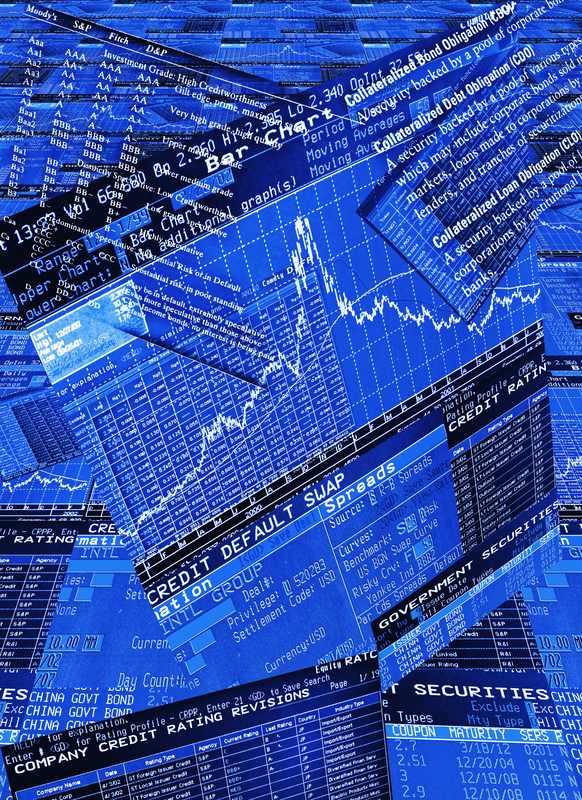
 Data Structure
Data Structure Networking
Networking RDBMS
RDBMS Operating System
Operating System Java
Java MS Excel
MS Excel iOS
iOS HTML
HTML CSS
CSS Android
Android Python
Python C Programming
C Programming C++
C++ C#
C# MongoDB
MongoDB MySQL
MySQL Javascript
Javascript PHP
PHP
- Selected Reading
- UPSC IAS Exams Notes
- Developer's Best Practices
- Questions and Answers
- Effective Resume Writing
- HR Interview Questions
- Computer Glossary
- Who is Who
Proprietary Trading
Introduction
When financial institutions use their cash instead of making transactions on behalf of customers or investors, then these financial institutions such as banks, or hedge funds businesses engage in a practice known as proprietary trading. When a company engages in proprietary trading, it does so intending to make a profit by purchasing and disposing of financial instruments, such as commodities, stocks, bonds, currencies, derivatives, and various other securities.
Explanation of Proprietary Trading

Proprietary trading is the practice of financial services companies like brokerage houses, investment banks and hedge funds. The members of proprietary trading desks are frequently experienced dealers and analysts who rely on their trading judgments on their knowledge, market research, and trading methods. To make money for the company, they try to take advantage of price differences, market inefficiencies, and sudden price changes.
Different factors can drive proprietary trading. Some financial institutions use proprietary trading to expand outside their standard client-based business operations and diversify their sources of income. Others could take part in proprietary trading as a risk management strategy or to improve their market-making skills.
It is significant to remember that engaging in proprietary trading entails accepting financial risks because gains are not always assured and deficits can occur. To safeguard the security of the stock market and the institutions involved in such operations, regulatory authorities frequently set particular limitations on proprietary trading owing to the potential risk concerned, such as requirements for capital and risk management standards.
Types of Proprietary Trading
Market making is the process of concurrently quoting the asking and bid prices for certain securities or financial instruments to provide liquidity to the market. By purchasing at the asking price and selling with the asking price, market makers try to capitalize on the bid-ask spread, or the disparity between the cost of buying and the sale price. This tactic promotes market liquidity and smooth trading.
Depending on anticipated market responses to particular events, which include earnings declarations, acquisitions or mergers, governmental decisions, or financial information releases, is known as event-driven trading. Trading decisions are based on traders' analyses of the probable effects of such occurrences and their projections of how the stock market will respond.
High-frequency trading is the practice of carrying out deals at exceedingly rapid speeds by utilizing complex algorithms and robust computer systems. HFT companies seek to make money from minute pricing differences and momentary market inefficiencies, which could last only a fraction of a second. To seize these transient chances, they rely on connections with high speed and low latency.
Based on their study of macroeconomic factors and trends, global macro traders take positions in a variety of markets, such as stocks, bonds, and commodities. They place trades following their assessments of the state of the global economy, interest rates, geopolitical developments, and other macro indicators.
Proprietary Trading and Financial Institutions
Financial institutions engage in propriety trading solely for their financial gain. Financial institutions and stockbroking organizations work on margins, which are razor-thin in nature, for their goods and services as a result of the intense competition they encounter. The principal sources of income might not be sufficient to support them over the long term; however, they engage in proprietary trading as a result to make money off of stock market trading and investment. The company would then use the money it made from the market to keep running its operations and further its goals and objectives.
Second, companies and organizations in the financial industry typically have a stronger competitive edge than the retail investor sector. They have substantially more investment cash, which they can utilize to their advantage, and they also have better and quicker availability of high-level, price-sensitive information. Comparing proprietary trading to other investment choices such as bonds and term deposits, financial institutions can benefit from a greater rate of return.
Advantages of Proprietary Trading
Provide rewards Effective proprietary trading can provide financial organizations with enormous rewards. Proprietary trading rooms can take advantage of market opportunities and produce enticing profits since they have knowledgeable traders, sophisticated tactics, and access to market data.
Risk management Trading proprietary products can be used to manage risks. Institutions can successfully offset their exposure to market volatility, minimizing possible losses, by taking stakes in financial instruments which offset risks in other parts of the firm.
Increase market efficiency Market liquidity is influenced by proprietary trading, especially by market-making activities. Proprietary traders increase market efficiency and guarantee simpler transactions for all market participants by supplying bid and request prices and facilitating trading.
Expand revenue Financial institutions can expand their revenue sources beyond conventional client-based operations like investment banking by engaging in proprietary trading.
Increase overall profitability Institutions may be able to increase overall profitability and counteract potential decreases in other parts of their business by doing this.
Disadvantages of Proprietary Trading
Unique financial risks Trading in proprietary products carries unique financial risks. The stock market can be unreliable, and bad trading choices can cost you money. Proprietary trading activity can expose financial organizations to significant risks and potential losses if improperly managed.
Impact by unforeseen market occurrences Market volatility and shifting market conditions can have an impact on proprietary trading. The financial success of proprietary trading techniques might be impacted by unforeseen market occurrences, economic volatility, or regulatory changes. To deal with such uncertainties, flexibility and risk management techniques are crucial.
Credibility and public trust may suffer Private trading has come under attention and criticism from the general public, particularly when it involves major financial organizations. The credibility and public trust of the institution may suffer if unfair advantage or excessive risk-taking are perceived to be occurring.
Collision of customers' interests The institution's financial operations with the interests of its customers may collide as a result of proprietary trading. This is especially important when the company executes trades for clients while also engaging in proprietary trading. For the sake of upholding trust and regulatory compliance, it is essential to ensure adequate separation and management of various interests.
Conclusion
Proprietary trading is a crucial facet of the financial sector, giving financial institutions the chance to make money, control risks, and increase market liquidity. To minimize potential drawbacks and assure ethical trading practices, financial organizations involved in proprietary trading must have strong risk management procedures, follow regulatory requirements, and maintain transparency.
FAQs
Qns 1. Is Indian law tolerant of proprietary trading?
Ans. The Volcker Rule outlaws proprietary trading, hedge fund ownership, and participation with private equity funds by banks and corporations that hold banks.
Qns 2. Brokers who engage in proprietary trading?
Ans.
Lux Trading Firm
Topstep
FundedNext.
SurgeTrader
FTMO
Qns 3. Which trading is the safest?
Ans. The use of limit orders and stop losses is frequently the most secure method of trading. This occurs frequently in forex trading. This can be achieved by tracking trading trends and forecasting market movement.

